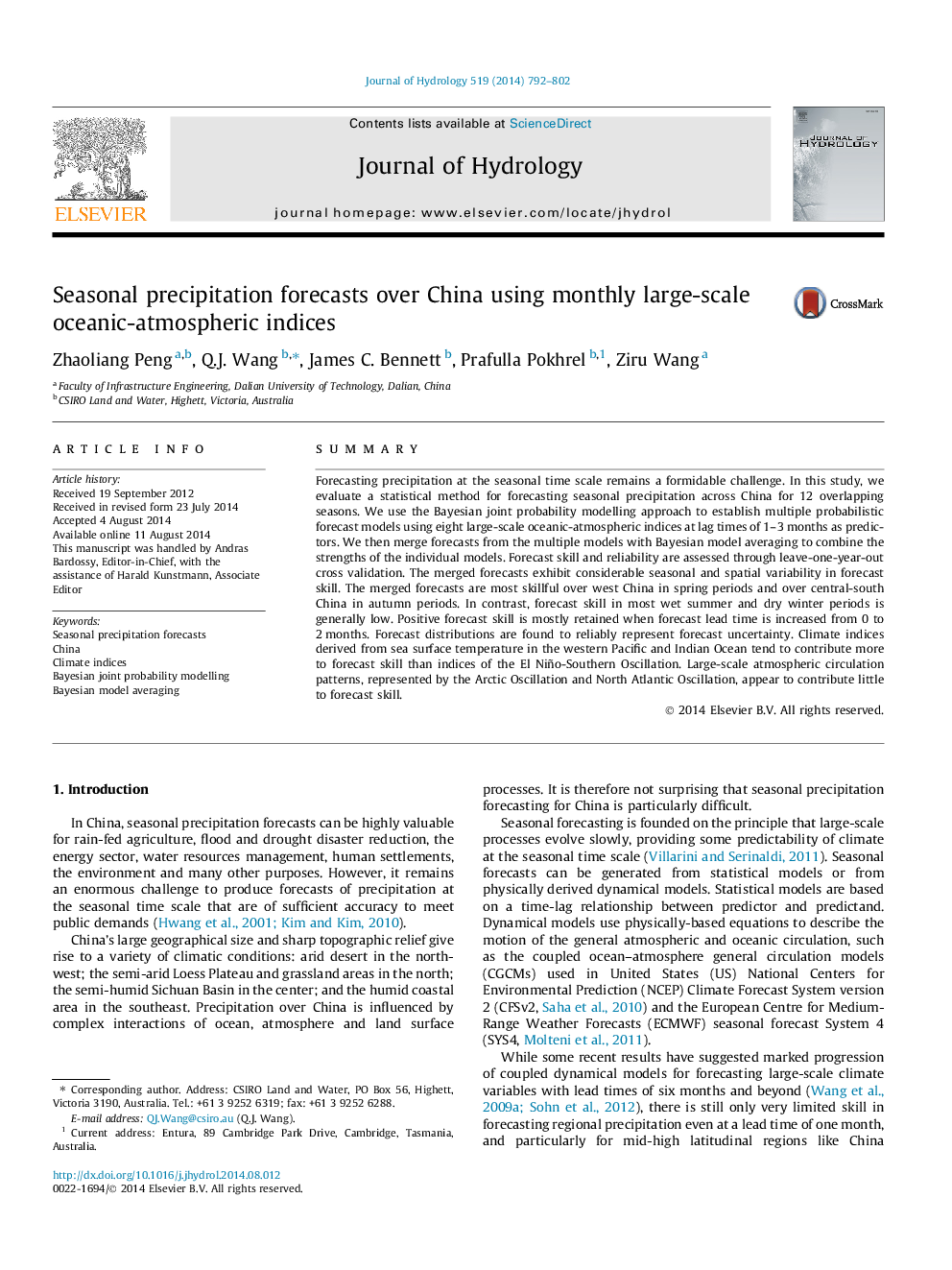| کد مقاله | کد نشریه | سال انتشار | مقاله انگلیسی | نسخه تمام متن |
|---|---|---|---|---|
| 6412496 | 1332898 | 2014 | 11 صفحه PDF | دانلود رایگان |
- We present a method for forecasting seasonal precipitation across China.
- Multiple forecast models are established using climate indices as predictors.
- Forecasts from the multiple models are merged to combine strengths.
- Forecasts exhibit considerable seasonal and spatial variability in forecast skill.
- Climate indices based on local sea surface temperature contribute the most skill.
SummaryForecasting precipitation at the seasonal time scale remains a formidable challenge. In this study, we evaluate a statistical method for forecasting seasonal precipitation across China for 12 overlapping seasons. We use the Bayesian joint probability modelling approach to establish multiple probabilistic forecast models using eight large-scale oceanic-atmospheric indices at lag times of 1-3Â months as predictors. We then merge forecasts from the multiple models with Bayesian model averaging to combine the strengths of the individual models. Forecast skill and reliability are assessed through leave-one-year-out cross validation. The merged forecasts exhibit considerable seasonal and spatial variability in forecast skill. The merged forecasts are most skillful over west China in spring periods and over central-south China in autumn periods. In contrast, forecast skill in most wet summer and dry winter periods is generally low. Positive forecast skill is mostly retained when forecast lead time is increased from 0 to 2Â months. Forecast distributions are found to reliably represent forecast uncertainty. Climate indices derived from sea surface temperature in the western Pacific and Indian Ocean tend to contribute more to forecast skill than indices of the El Niño-Southern Oscillation. Large-scale atmospheric circulation patterns, represented by the Arctic Oscillation and North Atlantic Oscillation, appear to contribute little to forecast skill.
Journal: Journal of Hydrology - Volume 519, Part A, 27 November 2014, Pages 792-802
